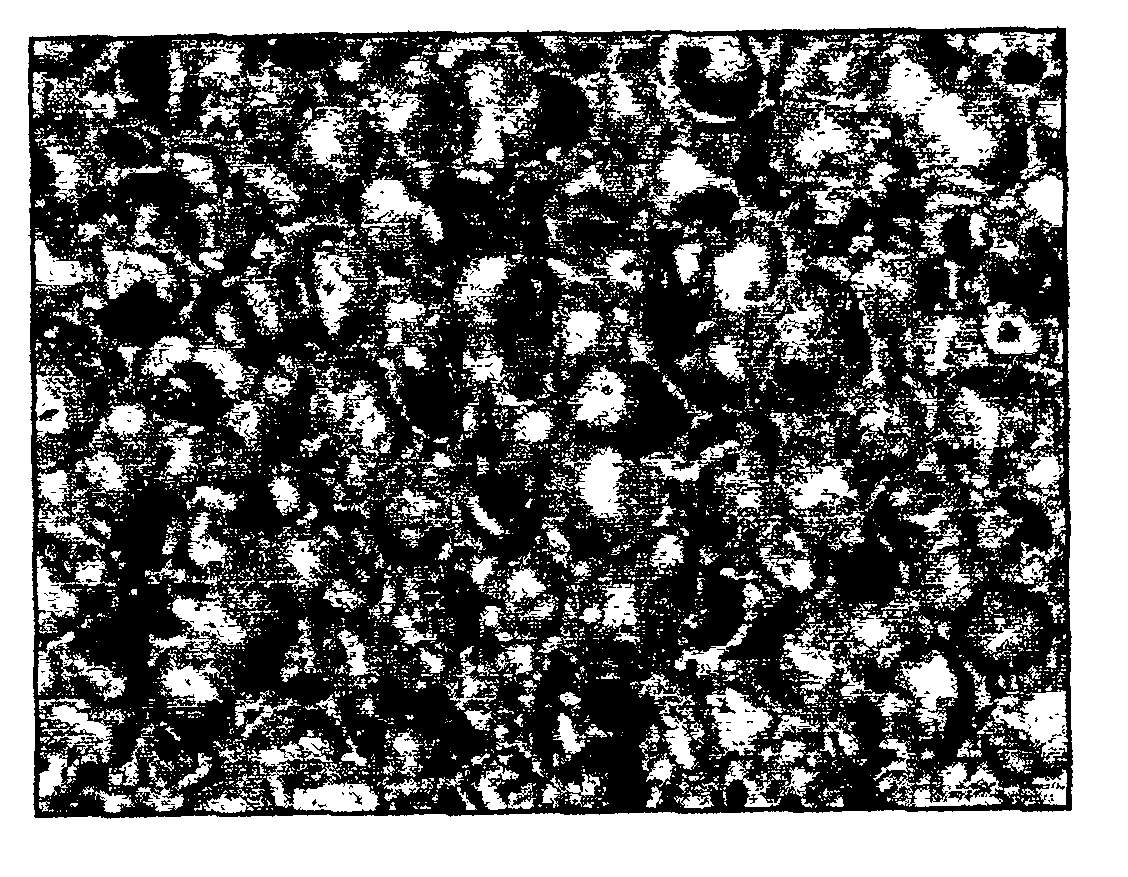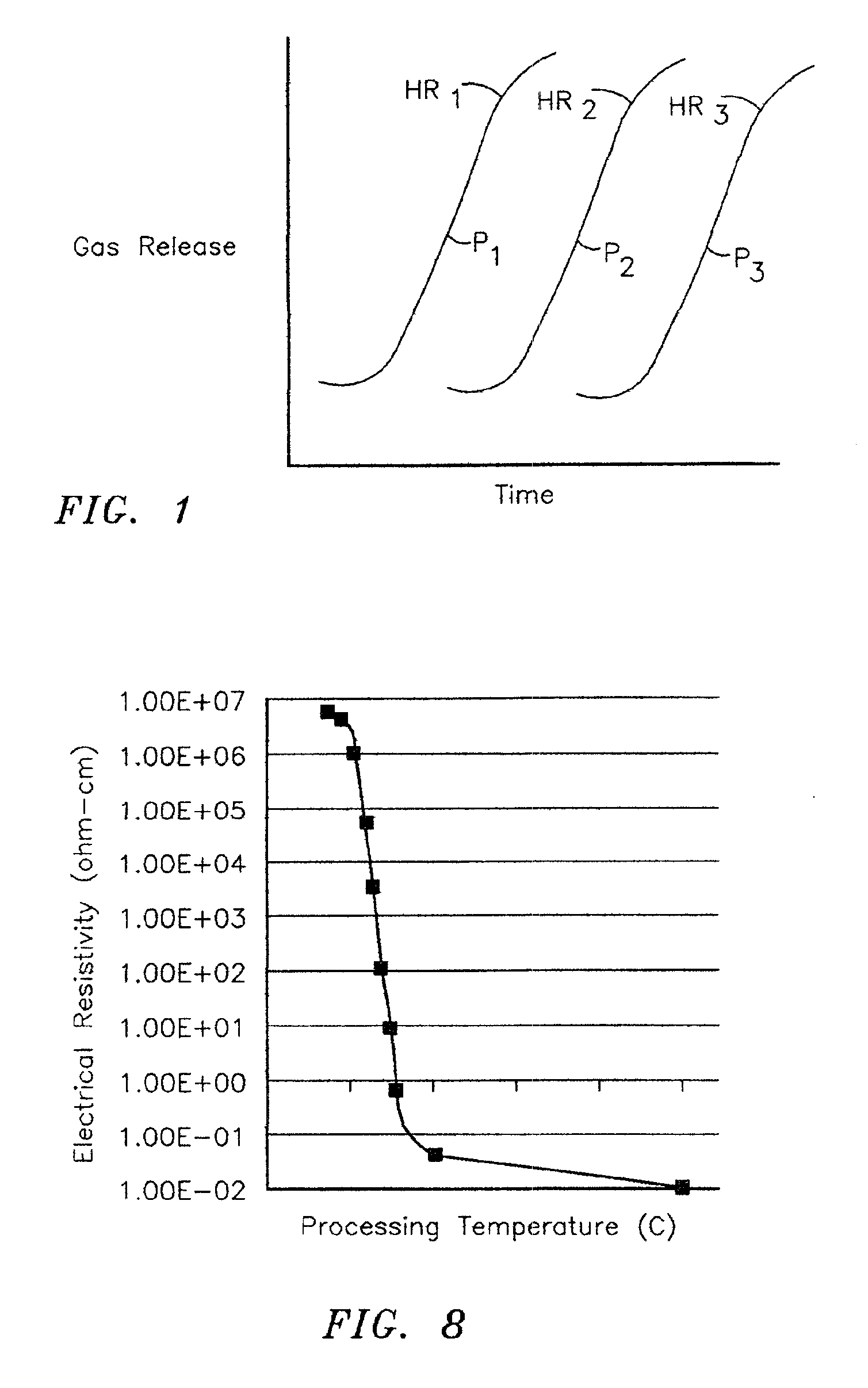Electrochemical cell electrodes comprising coal-based carbon foam
a carbon foam and electrode technology, applied in the field of carbon foam, can solve the problems of increasing the cost and efficiency of sources, tortuous paths, and increasing the demands on materials for electrode construction, and achieve excellent mass transfer properties and high inertness and resistan
- Summary
- Abstract
- Description
- Claims
- Application Information
AI Technical Summary
Benefits of technology
Problems solved by technology
Method used
Image
Examples
example 1
[0056]Coal-based, carbon foam fuel cell electrodes were produced from four different coal precursors and beat-treated them at several different graphitization temperatures for initial evaluation in fuel cell applications. An additional foam article, produced from a high-purity (and expensive) synthetic pitch, and heat treated to a very high temperature, was also included for comparison. A description of the four coals and one pitch employed in this study is presented in Table 1.
[0057]
TABLE 1Descriptions of coals included in this evaluationIDCoal IDSeamCommentsA610ElkhornPike CountyStoker, High-Vol.B729CoalburgWayne CountyWashed, DeepMine, High-VolC900 (POW)PowelltonPowellton CountryHigh-VolatileD800SewellMcDowell CountyStoker, Low-Vol.MN / AN / AMitsubishi ARA24 Resin (syntheticmesophase from naphthalene)
[0058]The four coals were characterized by (1) constituent analysis, (2) ultimate analysis, (3) free-swell index (in accordance with ASTM D720), and (4) Gieseler plasticity (in accordan...
example 2
Foaming
[0060]Carbon foam test articles were fabricated by foaming (thermally decomposing under controlled temperature and pressure conditions to produce cellular material of uniform density) and calcining (heat treating in an inert atmosphere to remove aliphatic material from the carbon structure) bituminous coal powders. Foaming took place in reactors manufactured by Parr Instruments (Moline, Ill.) at temperatures between 425 and 550° C. and nitrogen pressures between 0 (ambient) and 500 psi. Two identical Model 4570 high-pressure reactors, with 600° C. temperature and 3000 psi pressure service capabilities, were used in this evaluation.
[0061]Two hundred grams of material were used to produce each article, and the articles were formed in a 6061 aluminum can 5.0-inches in diameter by 6.0-inches in height. The process employed for foam article production was as follows.[0062]Load reactor with container filled with 200 grams of −60 mesh coal powder,[0063]Seal reactor by tightening six...
example 3
Calcining
[0076]All articles were calcined to 1050° C. by loading foam articles into a 304 stainless steel can and surrounding the articles with granulated coke breeze (Loresco Earth Backfill). The coke breeze served two purposes: (1) it increased thermal mass of the system to minimize temperature excursions and influence of heating element cycling, and (2) it scavenged oxygen from the furnace atmosphere. The calcining cycle was as follows.[0077]heating from ambient temperature to 1050° C. at a heating rate of 1.0° C. per minute,[0078]remaining at 1050° C. for two to three hours, and[0079]cooling at an uncontrolled rate (furnace power turned off).
[0080]A summary of the mass losses, shrinkages, densities, and compressive strength / modulus properties for the different coal precursors at the as-foamed (“green”) and calcined stages is presented in Table 3.
[0081]
TABLE 3Summary of foaming and calcining data for coal precursorsPrecursorSummaryParameter610729POW800averagemaximumminimumFoaming...
PUM
| Property | Measurement | Unit |
|---|---|---|
| pore size | aaaaa | aaaaa |
| density | aaaaa | aaaaa |
| diameter | aaaaa | aaaaa |
Abstract
Description
Claims
Application Information
 Login to View More
Login to View More - R&D
- Intellectual Property
- Life Sciences
- Materials
- Tech Scout
- Unparalleled Data Quality
- Higher Quality Content
- 60% Fewer Hallucinations
Browse by: Latest US Patents, China's latest patents, Technical Efficacy Thesaurus, Application Domain, Technology Topic, Popular Technical Reports.
© 2025 PatSnap. All rights reserved.Legal|Privacy policy|Modern Slavery Act Transparency Statement|Sitemap|About US| Contact US: help@patsnap.com



